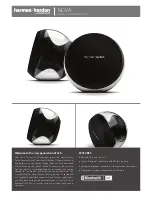
Functional characteristics
MIG/MAG welding
099-5TLPXQ-EW501
29.01.2021
41
Display
Setting/selection
End current time (duration of end current)
Burn-back time
> see 5.2.10 chapter
• ---------- Increase value > increase wire burn-back
• ---------- Decrease value > decrease wire burn-back
5.2.10 Burn-back
The wire burn-back parameter prevents the sticking of the wire electrode in the weld pool or at the contact
tip at the end of the welding process. The value is optimally preset for a variety of applications (but can be
adjusted if necessary). The adjustable value stands for the time until the power source switches off the
welding current after the welding process has been stopped.
Welding wire behaviour
Setting instructions
Wire electrode is sticking in the weld pool.
Increase value
Wire electrode is sticking on the contact tip or large ball forma-
tion on the wire electrode
Reduce value
5.2.11 forceArc XQ / forceArc puls XQ
Heat-reduced, directionally-stable and powerful arc with deep fusion penetration for the upper power
range.
Figure 5-25
• Smaller included angle due to deep penetration and directionally stable arc
• Excellent root and sidewall fusion
• Secure welding also with very long stick-outs
• Reduced undercuts
• Manual and automated applications
You can make use of these properties after selecting the forceArc process
> see 5.2.3 chapter
.
As with pulse arc welding, it is important to make sure of a good welding current connection.
• Keep welding current cables as short as possible and ensure that cable cross-sections are adequate!
• Fully unroll welding current cables, torche hose packages and, if applicable, intermediate hose packa-
ges. Avoid loops!
• Use welding torches, preferably water-cooled, that are suitable for the higher power range.
• Use welding wire with adequate copper coating when welding steel. The wire spool should have layer
spooling.
Unstable arc!
Welding current cables that are not fully unrolled can cause faults in the arc (flickering).
• Fully unroll welding current cables, torch hose packages and, if applicable, intermediate hose
packages. Avoid loops!
















































